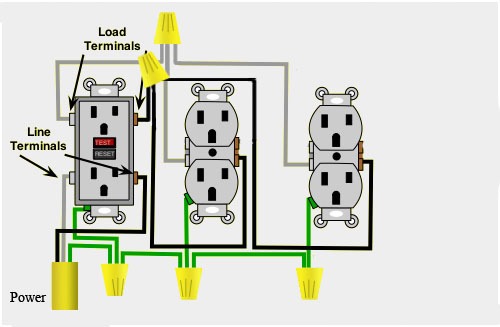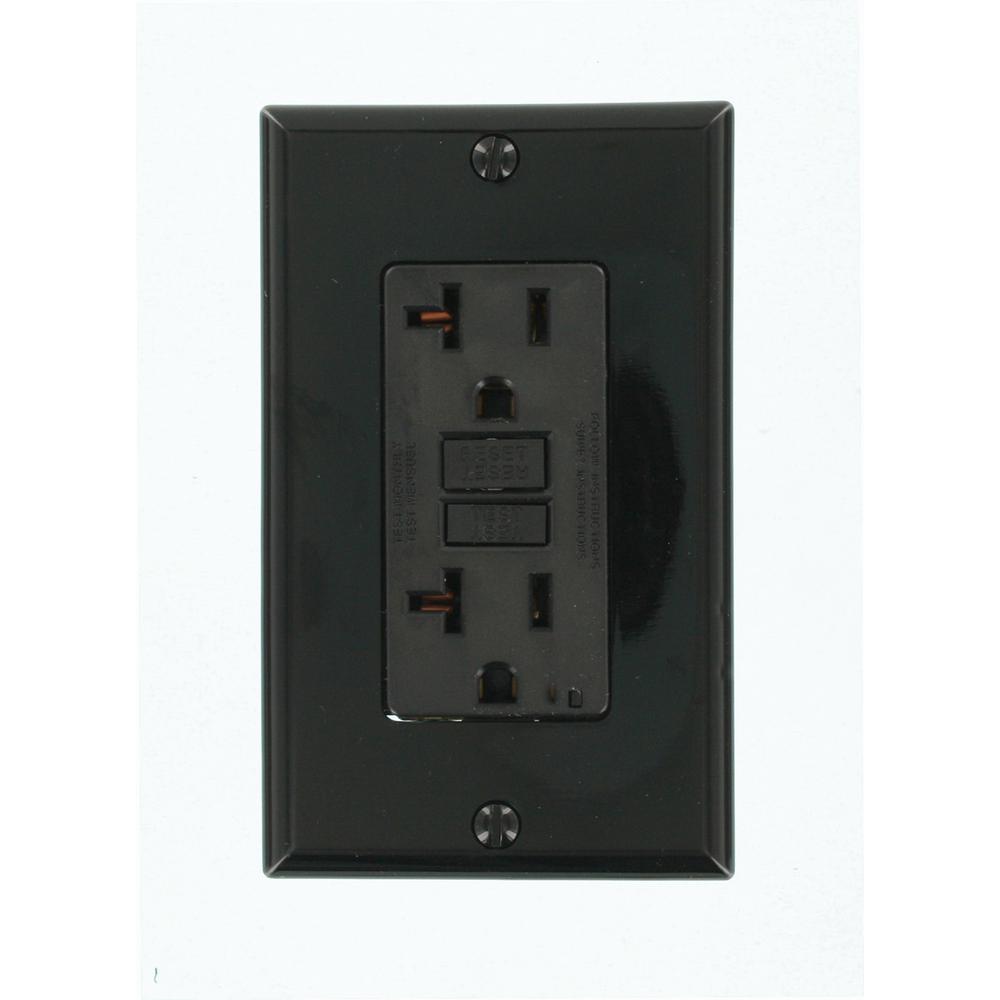

If you liked the other way, see Scenario 2. I.e, it's no longer "pick one socket, 1 on top 1 on bottom", now it's "1 appliance per GFCI". Keep that in mind when plugging in heavy draw appliances. Now, the 8 sockets go to circuits as follows: 1:1-2:2-3:3-4:4 There is no use for the LOAD terminals, leave the tape on them.īefore, the 8 sockets went to circuits as follows: 1.2-1.2-3.4-3.4 In box 2, cap the black and comnect red and neutral to the LINE terminals. Scenario 1:Īs you propose, in box 1 of each circuit, connect the GFCI+Receptacle device to the LINE terminals only. So the issue of extending off the LOAD terminals of one of the GFCI+receptacles will never come up.Ī GFCI that doesn't use its LOAD terminals can't have a shared neutral problem. Well, you need two GFCI+receptacle devices to do that. The whole point of an MWBC is to make good use of both hot legs. You only have two receptacle sites per MWBC. This type of shared-neutral wiring is called a Multi-wire Branch Circuit, or MWBC.Īll these issues are entirely mooted in your case, since you will not be able to use the LOAD terminals at all. This is because a double pole GFCI breaker monitors both ungrounded (hot) conductors, and a single shared grounded (neutral) conductor. This can easily be avoided by using a double pole GFCI breaker. In this situation, the breakers will detect a potential (false) ground fault and trip. This can present a problem when using two separate GFCI breakers, because the current on the grounded (neutral) conductor will be the difference between the two ungrounded conductors. If the currents on these conductors differs by more than a specific amount, the circuit is opened preventing current from flowing. Ground fault circuit interrupting devices work by measuring the current on the ungrounded (hot) conductor, and the grounded (neutral) conductor. This answer, on another question, makes a convincing argument for not using multiple GFCI with shared neutrals: The catch is you'll have to pigtail the neutral to the receptacles, not use the neutral from the load side of the first GFCI to feed the second. You can share a neutral between 2 GFCI receptacles. However, it then goes on to suggest that you can use multiple GFCI outlets with shared neutrals: GFCI receptacles work by monitoring the balance between hot and neutral, so if the neutral is shared the GFCI will not work properly. GFCI receptacles will not work properly with a shared neutral, you'll end up with nuisance tripping with a shared neutral. This answer starts off suggesting that this will not work: I've done a lot of reading about this and feel like I've read conflicting answers, which is why I'm asking what may seem like a duplicate question I need some clarification.Ĭould I cap the black line wire in one outlet and the red in another of the line wires at each outlet and wire the GFCI outlets as normal, or would the common neutral shared between two GFCI outlets cause them to keep tripping?
#GFCI OUTLET IN KITCHEN INSTALL#
This is how the existing outlets are wired:Īnd here are the two handle-tied breakers that supply the four outlets:Īside from installing a double-pole GFCI breaker back at the panel, what would be the best way to install GFCI outlets in this environment? The line tabs are broken on all four outlets and they are running in split configuration: black line to one half, red line to the other half. Each outlet has ground, a white neutral wire, and both a black and red line wire. There are two MWBCs, each with two outlets.

I have identified and shut off the two breakers that supply the four outlets and have pulled them out of the wall so I can see how they were wired.Īll four of these kitchen counter outlets are on multiwire branch circuits.
#GFCI OUTLET IN KITCHEN CODE#
My house was built in the late 1990s and apparently predates this GFCI requirement and I would like to bring them up to code with GFCI protection replacements for the three outlets close to the sink, if possible. Current Canadian electrical code stipulates that any power outlets located within 1.5 m of a sink should have GFCI protection.

None of them are GFCI and some are damaged and in need of replacement. There are four power outlets above my kitchen counter: three are located within 1.5 m of the sink, while the last one is further away.


 0 kommentar(er)
0 kommentar(er)
